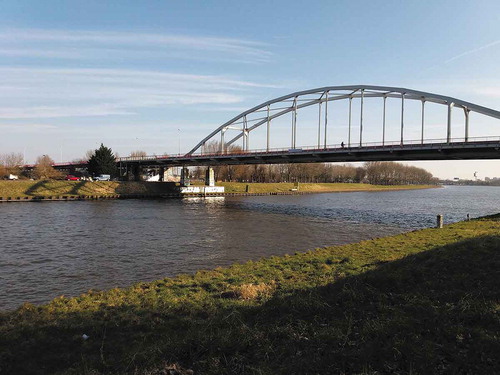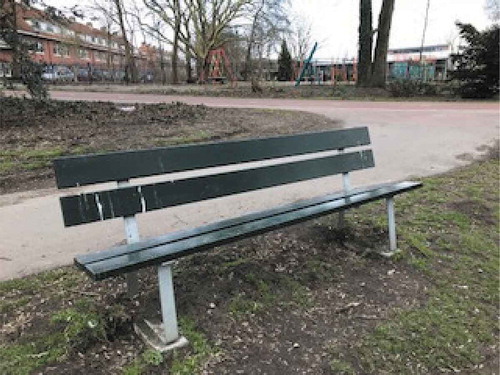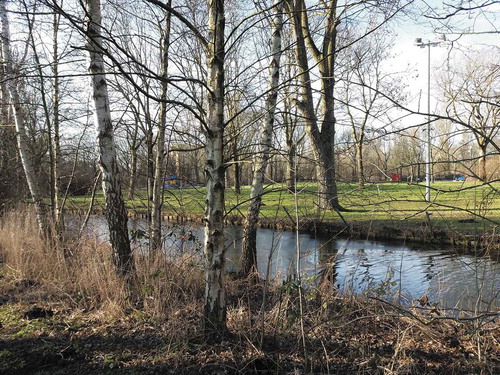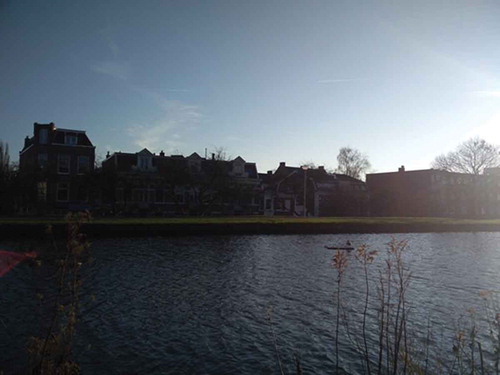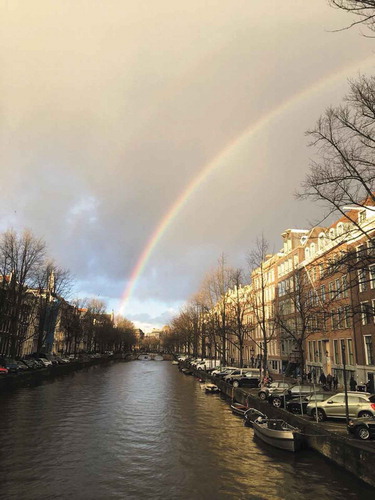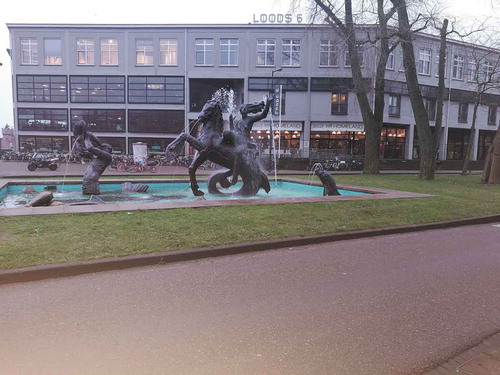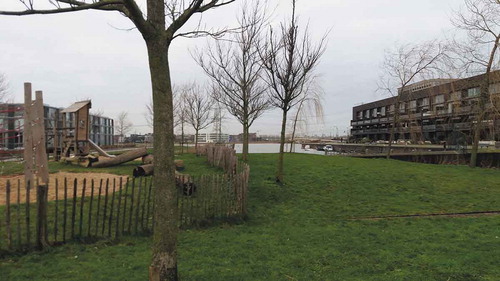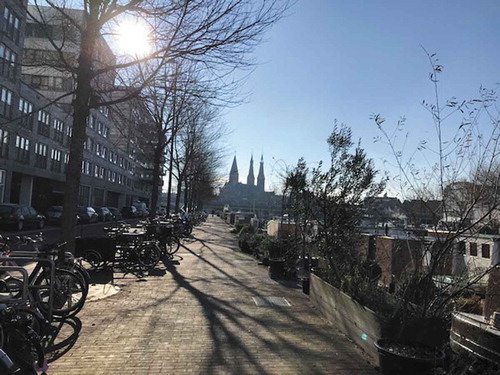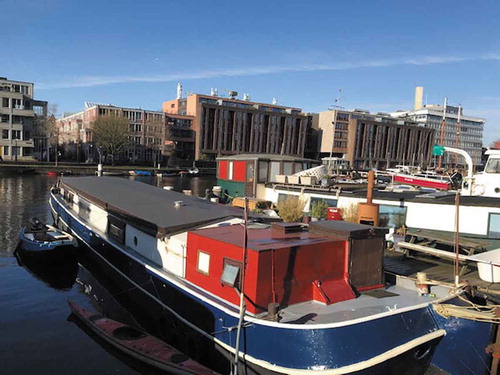ABSTRACT
Increasing urbanization of human society is a universal trend and one that is likely to affect global levels of health and well-being. Rapid expansion of urban living opens new opportunities for people, but also creates significant challenges. We do not always understand how people interact with and connect to their environment, how they experience it and what meaning they attach to certain aspects of it. However, this knowledge can be essential for better understanding of the impact these aspects of the environment can have on their mental health and well-being. In this photo essay, we explore older people’s perceptions of their urban living environment in a highly densely populated urban area; the city of Amsterdam. Participants took photos of salient aspects of their living environment that as they believed influenced their mental health and well-being. Participants searched their living environment for tranquility, peace, beauty, memories and meaning. Listening to the experiences and stories of older adults makes us more aware of their emotional world in this time of global urbanization.
Increasing urbanization of human society is a universal trend and one that is likely to affect global levels of health and well-being (Moore et al. Citation2003, Ompad et al. Citation2007, Srivastava Citation2009, Ompad Citation2010, Bai et al. Citation2012, Szabo Citation2018). Enormous increase in the global urban population has been referred to as one of the indicators of the Great Acceleration, happening since the 1950s, and is one of the unprecedented developments of human geography (Costanza et al. Citation2007, McMichael Citation2013). Rapid expansion of urban living opens new opportunities for people, but at the same time creates significant challenges. People interact with urban environments in search of economic and social connections and in search of meaning. It stands to reason that a successful epidemiological enterprise devotes attention to the links between urban living and health. The question of how the urban environment influences health and well-being has been explored numerous times before, but evidence is not always conclusive (Galea et al. Citation2005, van Os et al. Citation2010, Rosso et al. Citation2011). We do not always understand how people interact with and connect to their environment, how they experience it and what meaning they attach to certain aspects of it. However, this knowledge can be essential for getting insights into emotional world of people and therewith understand better the impact these aspects of the environment can have on their mental health and well-being.
We explored older people’s perceptions of their urban living environment in a highly densely populated urban area; the city of Amsterdam. A purposively selected sample of 20 young-old participants (11 males and nine females, 55–70 years) took part in the study. It was conducted in the urban context of Amsterdam, in five different neighborhoods with various neighborhood SES (NSES). Five participants were from neighborhoods with low NSES and the other 15 from neighborhoods with high NSES.
They were asked to photograph salient aspects of their living environment; i.e. aspects that they believed influenced their mental health and well-being. We used photovoice and in-depth semi-structured interviews. Photovoice is a qualitative visual research method that refers to photographs taken by the participants themselves where these photos are used to explore and address their lived experiences (Wang and Redwood-Jones Citation2001, Hergenrather et al. Citation2009, Mahmood et al. Citation2012, Ronzi et al. Citation2016, Mysyuk and Huisman Citation2019).
Potential participants were invited to take part in the study by invitation letter and then were contacted by phone. If they were interested to participate, they received a participant package by post including an invitation letter, instructions for taking photos, informed consent forms and a photo journal. The participants were asked to fill in a photo journal describing each photo. General information on how to take photos was provided in the invitation letter. Non-directive instructions about taking the photos were provided without specifying what kind of photos participants should take; rather emphasizing that they should capture their living environment.
Photographs, photo journals and transcripts of the interviews were analyzed using the qualitative data analysis software Atlas.ti which allows to retrieve not only textual data but also elements of visual data. The approach used for the analysis of data was primarily inductive, in which analytical concepts are derived and emerged from the data through a coding technique based on a grounded theory approach. This method of analysis allows exploring the ways in which respondents explain their own experiences and also permits unexpected topics, issues and thoughts to emerge.
The photosFootnote1 and the stories attached to them reflected aspects of the environment that are not often observed or investigated in epidemiological research, even though participants believed that they were of great importance to mental health. Participants searched their living environment for tranquility, peace, beauty, memories and meaning. Even in a highly densely populated area like Amsterdam, they found plenty of these.
Participants sought ways to reflect their emotional connection to their city and narrate this to the researchers. A bridge was perceived as a link to the city (), being a symbol of freedom and connection ‘This bridge is my link to the city, it makes me feel connected to it and being part of it … it is very important for me (Mrs A)’. Crossing the bridge meant becoming part of the city, belonging to it. A bench in the park () triggered memories of a significant person who often was sitting on that bench ‘It was a favorite bench of my father … he used to sit there all the time … I like to sit here and all the memories are becoming alive’ (Mrs R). Green spaces were frequently related to connectivity with nature, reflecting the aesthetics of the environment. Parks and gardens were often experienced as a source of relaxation and peace of mind showing how important they were for older adults ( and ) ‘I like to walk in this park, it is so beautiful and peaceful here. I can just come and rest here (Mr A)’. Similar to green spaces, blue space brought relaxation and calmness, being almost like therapy when needed () ‘Water is calming me down, sometimes it even has therapeutic effect on me’ (Mr K). Playgrounds, street views, elements of architecture were not only illustrating the sense of beauty that older adults tried to capture, but also showed how much they valued space, modernity and freedom (–) ‘I like to see these playgrounds, they are so spacious, beautiful, and quite modern … when I look at them I feel free and independent (Mrs S)’.
The photos that were taken by the participants gave a distinct visual insight into the parts of urban living environment that are of a big significance for older adults. Listening to the experiences and stories of older adults makes us more aware of their emotional world in this time of global urbanization. A challenge of health research is to investigate the role of neighborhoods and living environments in people’s need for tranquility, aesthetics and belonging, because these may be crucial for people’s mental health.
Acknowledgments
This study was supported by the European Union Horizon 2020 Programme under grant agreement n°667661 (Promoting mental wellbeing in the ageing population – MINDMAP). The study does not necessarily reflect the Commission’s views and in no way anticipates the Commission’s future policy in this area.’
Disclosure statement
No potential conflict of interest was reported by the authors.
Additional information
Notes on contributors
Yuliya Mysyuk
Yuliya Mysyuk is a postdoctoral researcher at the Longitudinal Aging Study Amsterdam. She studies urban environment and its impact on mental health and well-being of older adults.
Martijn Huisman
Martijn Huisman is a professor of Epidemiology of Ageing and scientific director of Longitudinal Aging study Amsterdam. He studies physical, emotional, cognitive and social functioning of Dutch older adults.
Notes
1. All images were taken by the participants and are reproduced with thier permission.
References
- Bai, X., et al., 2012. Health and wellbeing in the changing urban environment: complex challenges, scientific responses, and the way forward. Current opinion in environmental sustainability, 4 (4), 465–472. doi:10.1016/j.cosust.2012.09.009.
- Costanza, R., Graumlich, L., and Steffen, W.L., 2007. Sustainability or collapse? An integrated history and future of people on Earth. Berlin, Germany: Mit Press.
- Galea, S., Freudenberg, N., and Vlahov, D., 2005. Cities and population health. Social science & medicine (1982), 60 (5), 1017–1033. doi:10.1016/j.socscimed.2004.06.036.
- Hergenrather, K.C., et al., 2009. Photovoice as community-based participatory research: a qualitative review. American journal of health behavior, 33 (6), 686–698. doi:10.5993/AJHB.33.6.6.
- Mahmood, C.H., et al., 2012. A photovoice documentation of the role of neighborhood physical and social environments in older adults’ physical activity in two metropolitan areas in North America. Social science & medicine (1982), 74 (8), 1180–1192. doi:10.1016/j.socscimed.2011.12.039.
- McMichael, A.J., 2013. Globalization, climate change, and human health. The New England journal of medicine, 368 (14), 1335–1343. doi:10.1056/NEJMra1109341.
- Moore, M., Gould, P., and Keary, B.S., 2003. Global urbanization and impact on health. International journal of hygiene and environmental health, 206 (4), 269–278. doi:10.1078/1438-4639-00223.
- Mysyuk, Y. and Huisman, M., 2019. Photovoice method with older persons: a review. Ageing and society, 2, 1–29.
- Ompad, D., 2010. Hidden cities: unmasking and overcoming health inequities in urban settings. Kobe, Japan: World Health Organization, Centre for Health Developement.
- Ompad, D., Galea, S., and Vlahov, D., 2007. Urbanicity, urbanization, and the urban environment. In: Galea S. (Ed.), Macrosocial determinants of population health. New York, USA: Springer, 53–69.
- Ronzi, S., et al., 2016. Using photovoice methods to explore older people’s perceptions of respect and social inclusion in cities: opportunities, challenges and solutions. SSM - Population health, 2 (January), 732–745. doi:10.1016/j.ssmph.2016.09.004.
- Rosso, A.L., Auchincloss, A.H., and Michael, Y.L., 2011. The urban built environment and mobility in older adults: a comprehensive review. Journal of aging research, 2011, 1–10. doi:10.4061/2011/816106
- Srivastava, K., 2009. Urbanization and mental health. Industrial psychiatry journal, 18 (2), 75–76. doi:10.4103/0972-6748.64028.
- Szabo, C.P., 2018. Urbanization and mental health: a developing world perspective. Current opinion in psychiatry, 31 (3), 256–267. doi:10.1097/YCO.0000000000000414.
- van Os, J., Kenis, G., and Rutten, B.P., 2010. The environment and schizophrenia. Nature, 468 (7321), 203–212. doi:10.1038/nature09563.
- Wang, C. and Redwood-Jones, Y.A., 2001. Photovoice ethics: perspectives from Flint photovoice. Health education & behavior : the official publication of the society for public health education, 28 (5), 560–572. doi:10.1177/109019810102800504.

